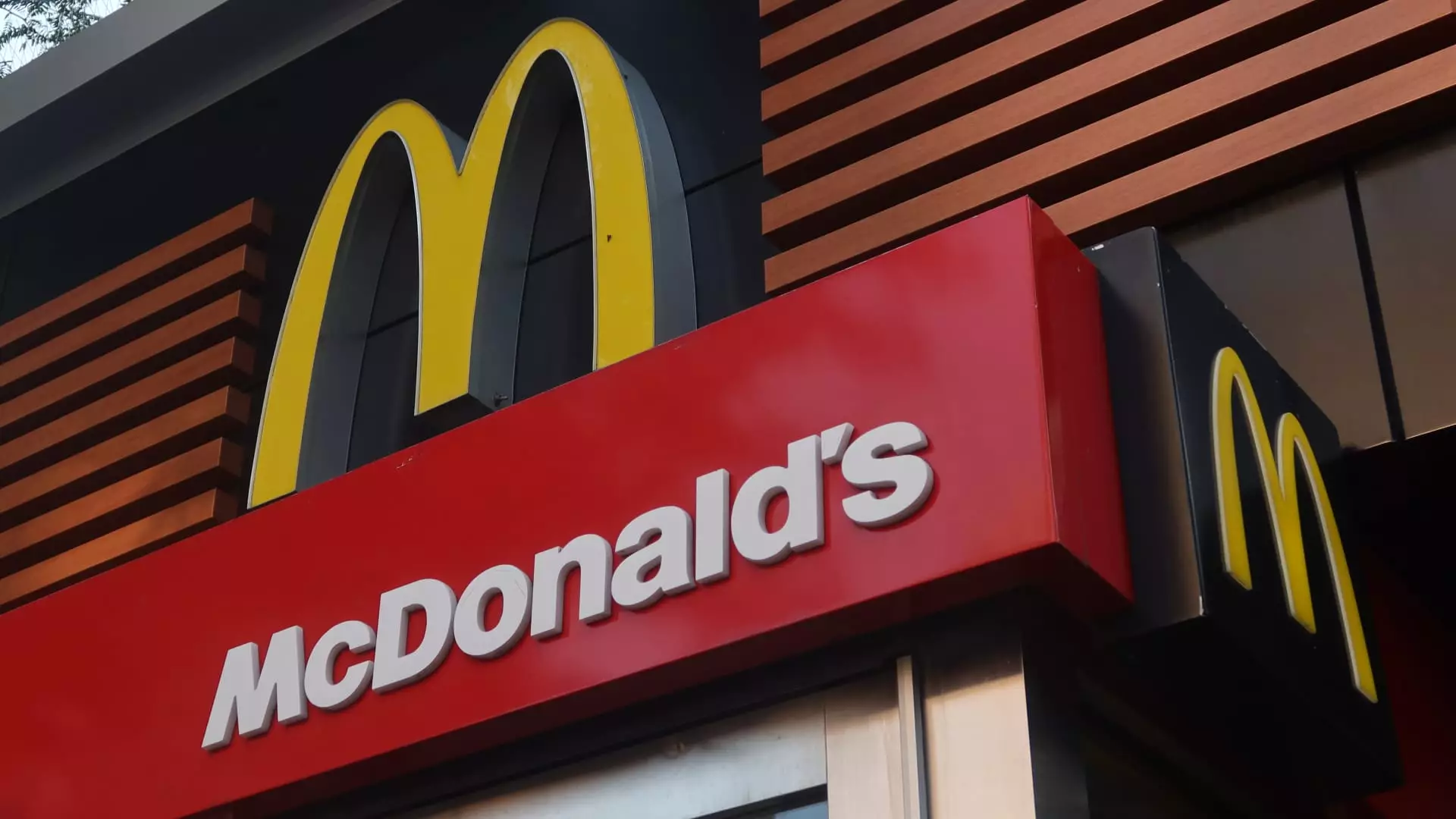Despite the recent headlines praising McDonald’s earnings as a sign of revival, a deeper analysis reveals that this apparent success is more fragile than it appears. The company’s quarterly report showcases impressive numbers—beating Wall Street expectations and signaling growth. However, beneath this veneer lies an unsettling reality: the American low-income consumer, the backbone of McDonald’s volume, continues to struggle. The chain’s reliance on promotional campaigns like the $5 meal deal and new offerings such as the Daily Double demonstrates a desperate attempt to lure back a demographic that remains economically strained. Such promotional strategies, while temporarily boosting sales, risk devaluing the brand’s core perception of quality and affordability, painting a picture of a company clinging to short-term tactics rather than sustainable growth.
Consumer Dynamics: A Tale of Two Americas?
CEO Chris Kempczinski is painfully aware of the bifurcated nature of the U.S. consumer base. While McDonald’s reports strong same-store sales and increased traffic, the troubling truth in the background is an ongoing decline in visits from low-income households—those who traditionally rely heavily on McDonald’s for affordability. The chain’s efforts to make its main menu more accessible are a tacit acknowledgment that the economic environment isn’t favoring the most vulnerable customers. The question is: Should McDonald’s hold onto its traditional value proposition, or chase a more affluent audience at the risk of alienating its loyal base? This dilemma underscores a core challenge: the company’s vision is being tested by economic austerity among its primary consumers, who are also the most price-sensitive.
International Markets: A Double-Edged Sword
Outside the U.S., McDonald’s seems to fare better, with international markets like Japan and China showing robust growth. This divergence illustrates a critical point: McDonald’s thrives where competition is less fierce, and consumers are more receptive to value. Countries like the UK, Australia, and Canada report gains that suggest the chain’s global appeal is still intact. But this international success, while encouraging, masks potential pitfalls. Over-reliance on international markets to compensate for domestic struggles is risky—especially in an era where geopolitical tensions, supply chain disruptions, and regulatory changes could undermine growth. Moreover, global markets often operate under different economic and cultural conditions that are not directly comparable to the United States, limiting the strategic flexibility of McDonald’s.
The Future: Short-term Gains versus Long-term Stability
Looking ahead, McDonald’s anticipates better results later in the year, buoyed by easier comparisons to recent crises and a promising rebound in key segments. Yet, this optimistic outlook may overlook deeper systemic issues. The chain’s focus on promotions and menu diversifications risks creating a cycle of dependence on discounts rather than genuine consumer loyalty. Additionally, the company’s emphasis on attracting a different, possibly wealthier demographic, without addressing the fundamental economic pressures faced by their core consumers, could spell trouble down the line.
Furthermore, the restaurant behemoth’s efforts to boost sales—such as reintroducing Snack Wraps and launching targeted campaigns—are symptomatic of a company scrambling to adapt rather than leading. True resilience would require addressing the root causes of low-income consumer decline, not merely offering quick fixes. Otherwise, McDonald’s risks a future where its growth is merely a mirage, sustained temporarily by promotional gloss rather than sustainable consumer trust and value.
Is McDonald’s Truly Rebounding or Just Temporarily Fluctuating?
While it’s tempting to celebrate the second quarter’s numbers as a sign of legitimate recovery, this should be viewed with skepticism. The core challenge remains: Can McDonald’s effectively evolve its brand in an economy where affordability is a growing concern? The company’s current trajectory suggests a reactive strategy that capitalizes on short-term consumer traffic, but this may not translate into durable success. In the long run, McDonald’s must grapple with its identity—whether as a value leader for the needy or a broader player trying to appeal to more affluent markets. The risk of diluting its brand with overly promotional offers could undermine its competitive edge, turning what seems like a comeback into a fleeting reprieve rather than a true renaissance.


Leave a Reply